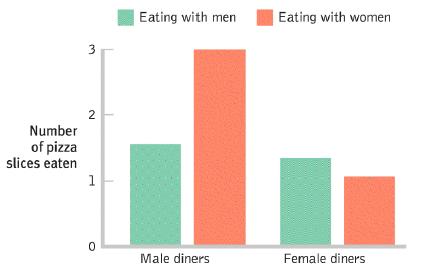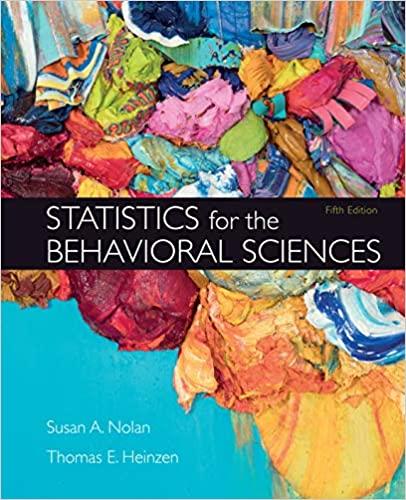Researchers examined whether men and women eat different amounts of food in the company of same-sex dining
Question:
Researchers examined whether men and women eat different amounts of food in the company of same-sex dining partners versus opposite-sex dining partners (Kniffin, Sigirci, & Wansink, 2016). From an evolutionary perspective, the researchers wondered which of the following two hypotheses would receive support: (1) Men—most of them presumably heterosexual—would show off by eating more in the presence of women to attract a mate; or (2) men would show off by eating more in the presence of other men in an effort to demonstrate status or dominance. Restaurant diners were observed eating lunch. Research assistants counted the number of pizza slices eaten by each diner in the study, along with the genders of their dining companions. The graph here depicts the results.

Description
Two pairs of bars are shown: the first pair representing Male diners, and the second pair representing Female diners. The approximate data are as follows. Male diners. Eating with men: 1.6 pizza slices, Eating with women: 3 slices. Female diners. Eating with men: 1.3 pizza slices, Eating with women: 1.1 slices.
a. Based on this graph, what type of ANOVA did the researchers conduct?
b. Does it seem as if there is a main effect of the gender of the diner? If yes, explain the effect in your own words. If not, explain your answer.
c. Does it seem as if there is a main effect of type of the gender of the diner’s lunch companion? If yes, explain the effect in your own words. If not, explain your answer.
d. Describe the interaction in your own words. Is this a quantitative interaction or a qualitative interaction? Explain your answer.
e. Which of the competing hypotheses received support from this study?
f. A link from the online version of the published article leads readers to additional information, including that the researchers conducted “a robustness check that affirms the main findings” of the study. The researchers also provide their data and details on the specific ways in which they conducted their statistical analyses. Explain, based on the concepts of severe testing and the open science movement, why the researchers might have provided this information.
Step by Step Answer:

Statistics For The Behavioral Sciences
ISBN: 9781319190743
5th Edition
Authors: Susan A. Nolan, Thomas Heinzen





